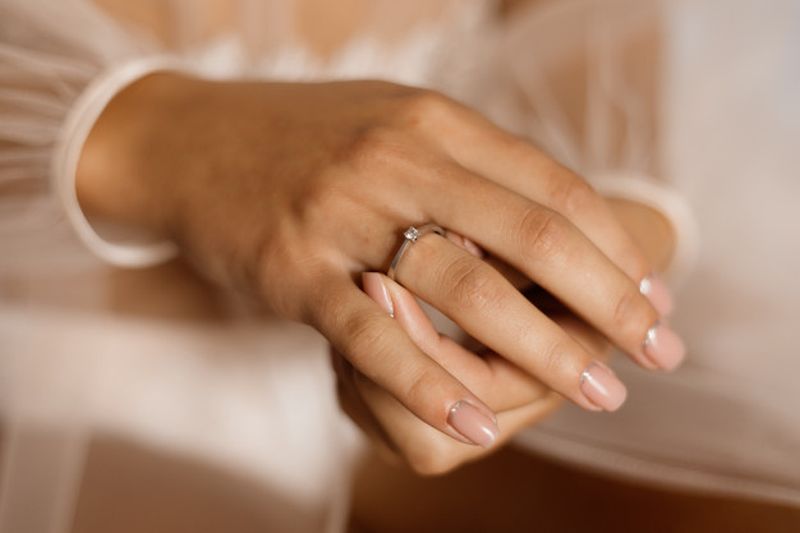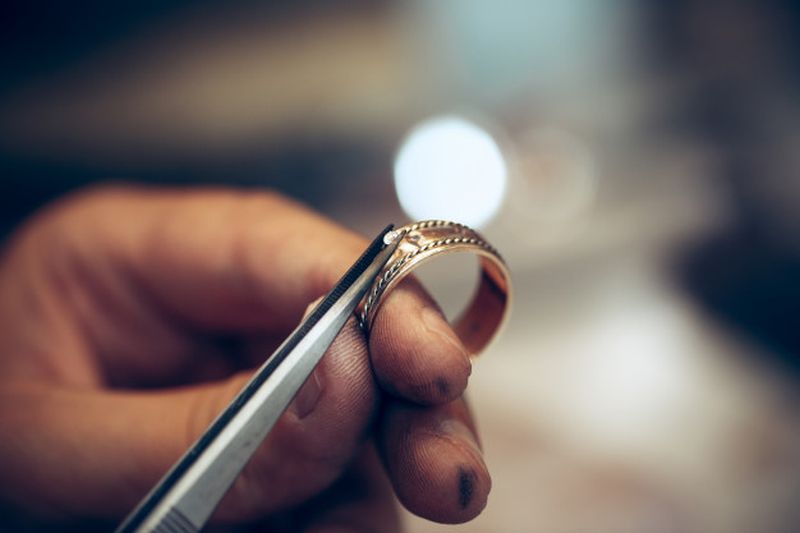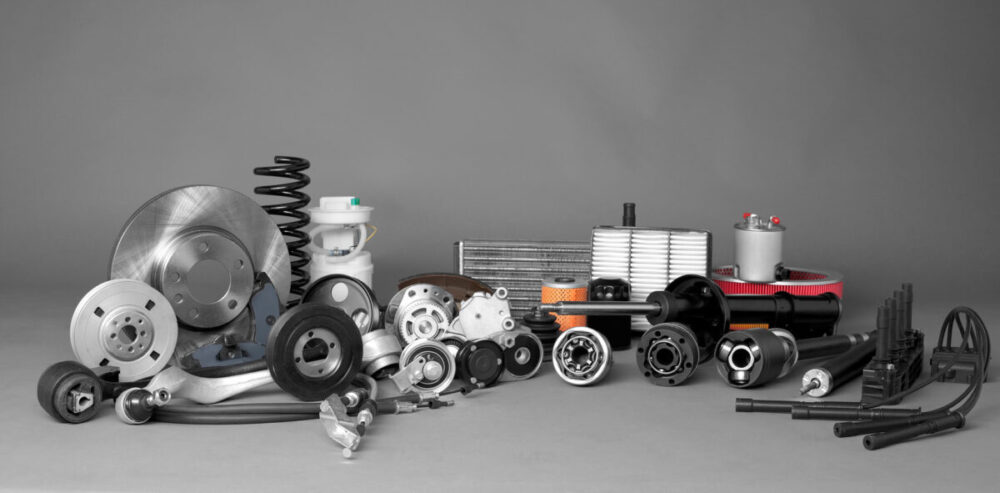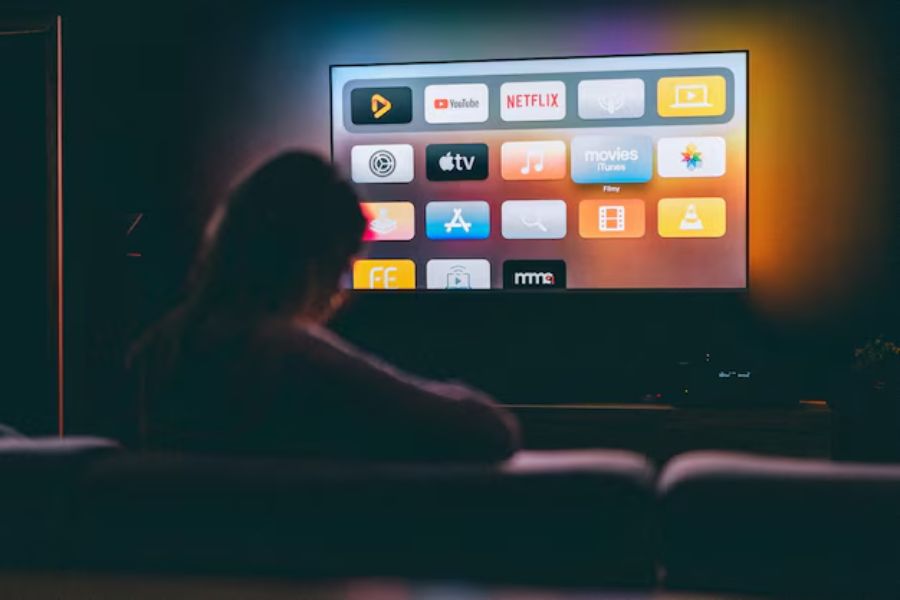Here we have listed down five foolproof ways and expert techniques to spot fake diamond rings. You can perform all these tests at your home and know if your gemstone is real or not.
-
The Water Test

One of the simplest tests to tell if it’s a real diamond or a fake one is to perform a water test.
Fill ¾ of a standard-sized glass with plain water and carefully drop the stone inside the glass filled with water. The property of real diamond is that it has high density, and as such, it’ll sink. On the other hand, a fake diamond will float or not drop like a real diamond. So, if your gemstone floats, it’s a fake one, and it sinks it’s a real one that you have in your hand.
-
The Fog Test

The next relatively easier test to spot a real vs. fake diamond is to do a fog test. In this test, you’ll need to engulf the stone with warm moist air. So, for this, take the diamond ring between two fingers and breath or blow hot air on it.
Diamond is an excellent natural conductor of heat. So, when you breathe on it, the fog shouldn’t stay much longer and should go away right away. On the other hand, if the gemstone gets fogged up quickly and takes much time to disappear, then the stone is likely to be a fake one.
-
The Heat Test

For performing the heat test, you’ll need a drinking glass, cold water, lighter, fireproof gloves, and the questionable stone. In this test, you’ll heat the stone and see if it shatters. A real diamond is not supposed to shatter while a fake one will shatter.
Fill up the glass with cold water. Next, hold the stone with the help of a set of plyers. Take your lighter and heat the gemstone for approximately 30 seconds. Don’t wait and drop the stone quickly into the glass filled with cold water. This test will let you understand the strength and the quality of the stone that you have in your hand.
Diamond is one of the most durable materials; thus, it is highly resistant to the above heat test. That means the change in temperature won’t affect the diamond. If the gemstone you have in your hand is not a genuine diamond, then it will break or shatter as soon as you drop it in the cold water.
Think of Pyrex material. If you heat a Pyrex dish in the oven and immediately wash it under cold water, the content will shatter or break down. It goes the same with zirconium or other material. A true and real diamond will not be affected by such a slight change in temperature.
-
The Black Light Test

For performing the black light test or UV light testing, hold the diamond stone under UV light and observe how it reacts. Diamonds and most of them are supposed to emit a bluish glow.
But note that not all of them emits the bluish glow. Some real diamonds do glow while others do not. As such, if the stone doesn’t glow under UV lights, the test doesn’t indicate that it’s a fake one.
The UV light test is actually not definitive, and it is better to test it with the help of a diamond expert.
You may also perform the other criteria described above and below this section to check if it’s a real or a fake one.
-
The Newspaper Test

The newspaper test is an at-home test that you can perform to test the diamond’s refractivity. Now, place the stone onto the newspaper. It may be on any page with lots of lettering, but make sure that it is bright.
Try to read the letters now. If you can read the newspaper’s letters, it means that gemstone is a fake stone. If the diamond is real, you won’t be able to make out the letters or read the paper’s letters.
It is because of the refraction of light. A real diamond is highly refractive, and that means when it is placed in a newspaper, it will refract light in a different direction.
As such, it will be difficult to read the words. Thus, if you can read the letters clearly, then it means the stone is a fake.
On the other hand, if you cannot read the letters due to the refraction of light, it means the stone is a real diamond indeed.
But this newspaper test has its part of caveats. You won’t be able to do the test on diamond rings as then you would have to take the stone out of the setting.
This test does well in loose diamonds, and in case if its set on a piece of jewelry, then consider performing the fog test or heat test.
Expert Techniques to spot a fake and a real diamond

The above are the at-home tests that you can perform to spot a fake and real diamond. However, here are some tests that professional diamond experts or gemologists use to tell the difference between a genuine and a fake diamond.
The Loupe Test
A professional gemologist will inspect the diamond with a loupe; a magnifying glass used explicitly for testing diamonds. With the help of the loupe, the gemologist will test for inclusions. Inclusions mean small imperfections that are found on the surface of a real diamond. A fake diamond does not have these imperfections.
The Diamond Tester
Professional gemologists and diamond experts test the diamonds with the help of a thermal conductivity probe or diamond tester. The tool uses heat to examine diamonds and is almost 98% accurate in testing diamonds.
The Bottom Line Recommendation
The above tests are for those who own jewelry pieces and want to find out if it’s real or fake. Suppose you wish to test the diamond stone left from your ancestors and want to have 100% accuracy while testing, please visit Novitadiamonds.com and ask for expert gemologists’ suggestions.




